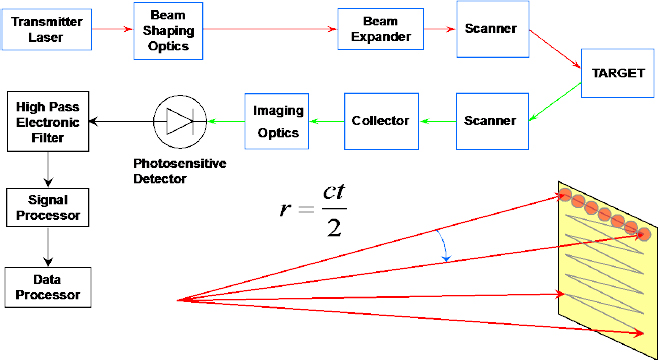News Center
Home > News Center
Application of Galvo Scanner in LIDAR
Light Laser Detection and Ranging, LIDAR, is one kind of radar system that assists to detect objectives’ position, velocity, etc. by laser beam. With laser as media, pulse laser, reflected by oscillating mirrors inside a galvo scanner, scatters onto objects such as plants, roads and construction on ground. Part of reflected light wave that is received by LIDAR will be taken into account along with laser’s height and its scanning angle, thus the coordinate of each light spot cast can be achieved. Continuous laser scanning in this way brings multiple spots’ data and accurate 3D images.
LIDAR is a state-of-the-art detecting method that involves laser and modern photoelectric technique. Apart from being used to acquire 3D geographic information, it is also widely seen in resource exploration, urban planning, agricultural development, water conservancy projects, land use, environmental monitoring, traffic and communication, earthquake prevention and disaster reduction, driverless vehicles, etc. LIDAR operates at a much higher frequency than microwaves with the following advantages:
A. High definition
B. Good stealthiness & interfering resistance
Concentrated laser beam navigated in straight route can hardly be intercepted unless it is cut in its way. Since few signal sources can interfere with the LIDAR in nature, LIDAR is strongly resistant to active interference.
C. Good detecting performance at low altitude
When it comes to low altitude, microwave radar has, to some extent, blind areas, because of echo reflected from objects on the ground. For LIDAR, only laser-cast objectives reflect. Without echo’s effect, LIDAR can work at “zero height”.
D. Small size & light weight



